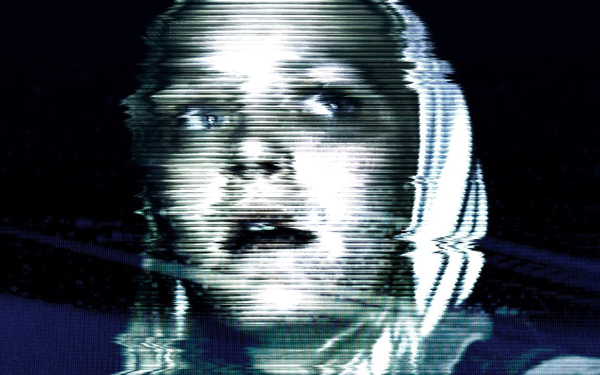On the evening of March 13th 1997, thousands of people reported seeing mysterious lights in the sky above Phoenix, Arizona. In Phoenix Forgotten, screenwriter T.S. Nowlin explores the mystery surrounding these lights, which have been a source of fascination for UFO and conspiracy theorists for 20 years.
Writer T.S. Nowlin (the Maze Runner films, Pacific Rim: Uprising) and his producer friend Wes Ball wanted to create a film that brought back some of the sense of authenticity that characterized the science fiction movies of their youth. And the real-life story of the Phoenix Lights lent itself perfectly to the type of story they wanted to tell.
In Phoenix Forgotten, Nowlin uses the event as a backdrop, against which he weaves a fictitious story of three teenagers who decide to wander out into the desert in search of answers to the lights, never to be seen or heard from again.
Directed by Justin Barber and produced by Ball and Ridley Scott, the film is shot in found footage style, but eschews pure horror in favor of a true-crime documentary style.
Creative Screenwriting spoke with Nowlin about incorporating research into your movie, writing a found-footage film, and the importance for writers of getting into production.

Phoenix Forgotten © 2017 – Cinelou Films
How did the project come about?

T.S. Nowlin
For me, the movie started as a conversation between myself and Wes Ball, one of the producers. Six or seven years ago we were watching the movie Catfish, and debating whether or not it could be real. And we thought it would be fun to bring that kind of authenticity to something that tackled the subject matter of movies that we grew up on, like Close Encounters of the Third Kind, or even Poltergeist.
The idea really was just to start with the mystery of these missing characters, then walk the audience through all the different possibilities of what might have happened to them, and gradually let the movie disappear down the rabbit hole of this particular conspiracy.
So that’s where it started. And later we brought in Justin Barber, who was a friend of ours and was someone we really wanted to work with. He would just run with the concept and make it his own.
Then around this time – I think it was 2012 – I pitched the concept to Ridley Scott and it turned out that he was looking to get involved with something like that. So everything just snowballed from there.
Were you already familiar with the Phoenix Lights?
No. We did a lot of research, and there was actually a lot of information out there about the Phoenix Lights – documentaries and eyewitness accounts. Unlike a lot of other UFO sightings of its type, this was a sighting that occurred over a densely populated metropolitan area, so there were a lot of eyewitness accounts.
The idea to piggyback onto the Phoenix Lights came later. We knew that we wanted to center the film around a real-life sighting, and we knew that we wanted the movie to be set in the American southwest and in the desert, to play with the existing iconography of UFO culture. So the Phoenix Lights just kind of gave us everything we were looking for.
In the process of doing all of the research we realized how many people saw the lights, and weren’t shy in terms of talking about their experiences and what they saw. And they all reported seeing the same thing.
We got excited by the idea of incorporating a lot of that reality into the movie and having it set a bar of authenticity that the rest of the movie would have to live up to.

Florence Hartigan as Sophie in Phoenix Forgotten © 2017 – Cinelou Films
Tell me more about the types of research you undertook.
We to Phoenix in December 2012 – me and Justin and one of our actors. We had her going around talking to people, asking about the Phoenix Lights and if they’d ever heard of them. We looked for people who were about our age, and would have been in high school when the lights happened. And we just found people randomly on the street willing to talk about what they saw.
We also went online and got in touch with a woman who had written a book about the Phoenix Lights, and also made a documentary about them. Really, we talked to anybody who was willing to talk to us.
It’s interesting, because you’re simultaneously doing research for the movie, and also looking for people who might want to be involved and actually be in it.
What are the challenges of writing a found footage film?
The big challenge is really just authenticity. We wanted to bring back the authentic experience that we felt the genre had moved away from.
It’s very easy to overwrite it. You can’t follow the typical rhythms of a horror movie.
It has to feel real and so you need to find actors who are willing to invest their own personalities into their characters and who are willing to improvise. We wanted to be able to send them on a road trip with a camera, and have them film that trip and come back with footage we could actually use.
So having a structure that was compulsive and entertaining but that could also be discovered in editing, and stay flexible: that was the challenge.

Luke Spencer Roberts as Josh in Phoenix Forgotten © 2017 – Cinelou Films
So was the script written in a way that would allow for a lot of improvisation?
Yes, absolutely. We kind of baked it into the process by saying: “this is the section where we’ll talk about real-life UFO sightings or people with actual experiences, and we’re going to let ourselves be open to finding those people.” Or, “this is the section where they start to get lost and we’re going to let them panic and write their own scene”.
But at the same time you also have scenes and dialogue written. Justin would basically have half pages of script that he could go out and shoot, and he was encouraged to then go beyond what was on the page and explore the scenes and situations with the actors, shooting what they came up with.
Tell me about the decision to keep much of the first half of the film as a documentary piece, with the horror element being very concentrated and more in the second half.
I hope that people will be pleasantly surprised that the movie isn’t quite what it appears to be. We didn’t want to do a typical horror movie by trying to jump out and scare you every five minutes.
I think a lot of times it was just about developing the characters and the mystery of what happened to these kids, and all the clues and the breadcrumb trail of evidence that they left behind. In my mind the movie was always meant to have as much in common with true crime documentaries like The Jinx or Making a Murderer as it does something like Paranormal Activity or The Blair Witch Project.
So one of the things that was appealing to me was that it didn’t feel like all of those other movies that I had seen, and that there was a melding of genres of happening. Those two halves of the movie basically interact – you have the present-day portion of the story that’s 20 years after these kids went missing, and essentially that first half is a promise that the second half has to keep.
You’re following all of the evidence and the clues and saying “this is where they went out to the desert”, “this is where we found the camera”, “this is where they made camp”, “this is where we got the car”, “this is where we found a little bit of blood”, and so on.
And then when the second half of the movie unfolds, you get the answers to all of those little pieces of the puzzle: “this is why they left the camera here”, or “this is why there was blood there”. We thought that could be fun. You’re always connecting the dots.

Making a Murderer © 2016 Netflix
What do you enjoy about writing science fiction?
It’s interesting, because I had never written sci-fi before The Maze Runner. And then the first script I wrote that was science fiction was the first one that really went out in a big way, and that a lot of people read. So I’ve just now been writing sci-fi for the last six or seven years.
I think what I like about it is that within science fiction, you can explore so many different story types. There’s really no limit. Telling you that a story is science fiction isn’t really descriptive of the character of the movie, or the type of movie. It could be a heist movie, it could be a chase movie, it could be a love story…there are just so many different avenues to explore our world and our time in through science fiction.
What is your writing process like?
I tend to write quickly. I’ll spend a lot of time outlining; I like to explore an idea and spend a lot of time in conversation and percolating. But when I start writing, I don’t really like to be in the middle of it. So I tend to write the first draft as quickly as possible – usually within three weeks – just putting something down on paper so that I have something to change.
Then I’ll read it and say “OK, so it’s not going to be that…maybe this needs to go here”. And then it’s just kind of an endless process of going through as many iterations as possible that we have time for.

Matt Biedel as Dan in Phoenix Forgotten © 2017 – Cinelou Films
Finally, do you have any advice for our readers?
If you’re a younger or aspiring writer, I think the best thing you can possibly do is get into production, any way you can. Even if you’re just making a little short film or funny video and putting it up on YouTube.
Don’t limit yourself to just writing. I think if you’re a writer and have a passion for writing, you should absolutely write. But the successful people that I’ve met never really stopped learning, they never stopped growing. Good screenwriters are good filmmakers.
So consider writing basically a tool in your arsenal, and then start developing other tools and other skills. Even if that means aligning yourself with other people who have skill sets to complement your own. Just get into production any way you can and start making stuff…things happen from there.
It’s interesting – I had sold a bunch of scripts and pitches from 2010 until 2014. But the first time I got a movie made was the first Maze Runner movie. And the reason it got made was because my friend Wes and I had sold a pitch together for a movie called Ruin, which was based on an animated short film that he’d made, pretty much entirely on his own.
He got hired for the first Maze Runner on the basis of that short, and then within a matter of months, they were prepping the movie and in production. That just goes to show that if you actually want to get movies made, you have to find a way to get into production yourself, start making films and putting them out there.
Featured image: Chelsea Lopez as Ashley in Phoenix Forgotten © 2017 – Cinelou Films
[addtoany]

